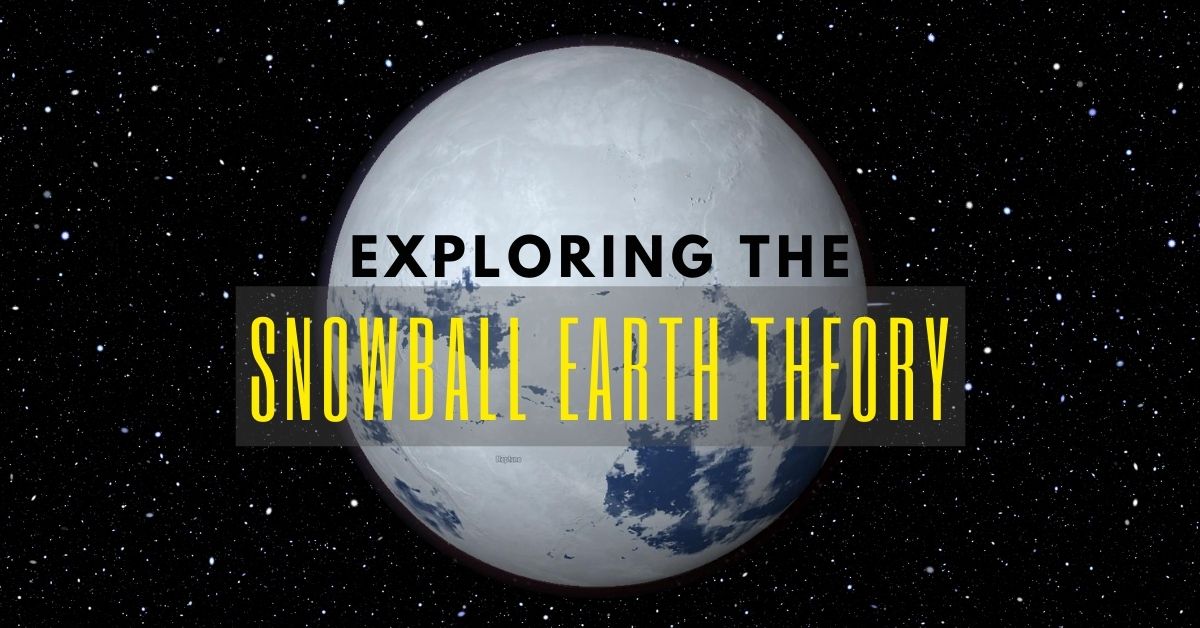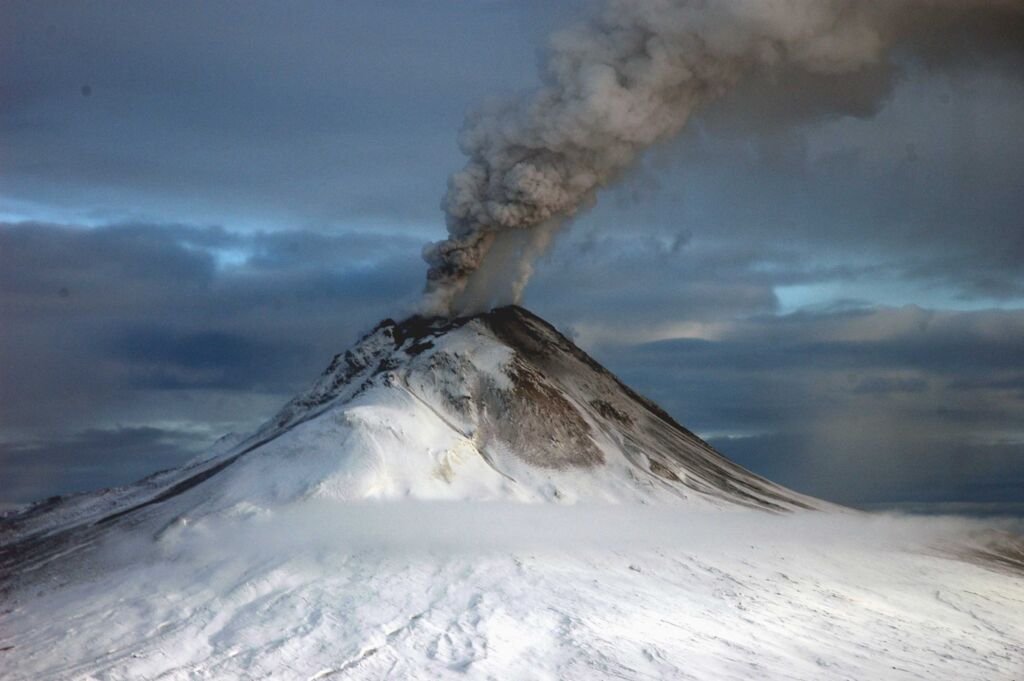Introduction:
Imagine a world locked in the unwavering grip of ice. Glaciers spread across every continent, from the windswept polar wastes to the once-vibrant tropics, a testament to a hostile climate. Oceans vanished beneath a crust of ice hundreds of meters thick. If life persisted on this desolate Snowball Earth, it likely clung precariously near volcanic vents, basking in the only warmth and energy on the lonely planet.
This chilling vision may have been our planet’s stark reality roughly 700 million years ago, during the geological period known as the Cryogenian. What could plunge the Earth into such a deep freeze? Scientists believe a catastrophic chain of events spiraled our planet towards this icy extreme. It is a testament to the delicate balance of Earth’s systems that a climate hospitable to life can tip precariously toward a frozen apocalypse.
The mysteries of Snowball Earth are many. Could a runaway ice-albedo feedback loop – where reflective ice amplifies cooling – have triggered this event? Did powerful volcanic eruptions disrupt the carbon cycle, throwing the climate into chaos? Or were other planetary-scale transformations responsible? Snowball Earth poses profound questions about our planet’s past and challenges our understanding of the forces that shape its climate.
The Evidence Behind Snowball Earth:
While the concept of a planet encased in ice might seem like science fiction, geologists have pieced together compelling evidence for the Snowball Earth theory. Here are some of the critical clues:
- Glacial Misfits: Glacial deposits, which contain distinct debris and rock formations, have been found in areas now located near the Earth’s equator. This implies that massive glaciers must have extended from the poles, reaching tropical latitudes, an occurrence only possible in a Snowball Earth scenario.
- Signature Sediments: Geologists analyze specific sedimentary patterns left behind by ancient glaciers. Features like dropstones – isolated rocks seemingly dropped into otherwise fine-grained ocean sediments – can only be explained by floating ice carrying and depositing debris far from its source.
- The Curious Case of Cap Carbonates: A fascinating piece of evidence comes from “cap carbonates.” These peculiar limestone and dolomite layers directly overlie glacial deposits. Their formation is believed to stem from the rapid buildup of atmospheric carbon dioxide after a Snowball Earth event. As Earth thawed, intense chemical weathering would have washed massive amounts of minerals into the oceans, triggering the deposition of the carbonate layers.
Scientists paint a chilling picture of an Earth transformed by examining these unique geologic fingerprints. These lines of evidence point towards a time when ice might have ruled supreme, a stark reminder of the dramatic climate shifts our planet is capable of.
How Did Earth Get So Cold?
To understand the descent into a Snowball Earth, we must grasp the delicate balance of greenhouse gases that keep our planet temperate. A disruption in this balance initiated a cascade of events, leading to the dramatic cooling that likely locked the Earth in ice.
◉ Volcanic Outgassing: A Counterintuitive Culprit
When we imagine heat sources, volcanoes might come to mind, but they play a vital role in Earth’s natural carbon cycle. Eruptions spew vast amounts of carbon dioxide (CO2), a potent greenhouse gas, into the atmosphere. CO2 traps heat, creating a warming effect.
Reduced volcanic activity would mean less CO2 released into the atmosphere. Without this greenhouse gas blanket, Earth’s temperatures would gradually decline. While a cooling trend doesn’t lead directly to a Snowball Earth, it sets the stage for other destabilizing factors.
◉ Rock Weathering: CO2 Removal Machine
Certain rock types, mainly volcanic basalt, react naturally with atmospheric carbon dioxide. When it rains, slightly acidic rainwater dissolves the rock, causing a chemical reaction that pulls CO2 out of the atmosphere, locking it away. This weathering process acts as a planetary thermostat, regulating CO2 levels over long times.
Some scientists theorize that a specific geological event exposed a vast region of easily weathered volcanic basalt. This increased weathering would have acted like a giant vacuum cleaner, sucking CO2 out of the atmosphere at an accelerated rate and further weakening the greenhouse effect.
◉ Albedo & Ice Feedback Loop: When Reflectivity Runs Wild
Albedo refers to how much sunlight a surface reflects. Fresh, white ice and snow have high albedos, reflecting solar radiation into space. Conversely, dark-colored land and water absorb more heat.
With an initial cooling period, likely influenced by the abovementioned factors, ice and snow cover start to increase. This creates a self-perpetuating feedback loop:
- More ice & snow = Increased albedo (reflectivity)
- Increased albedo = The Earth absorbs less heat
- Less heat = Even more ice and snow formation
This vicious cycle amplifies the cooling effect dramatically, potentially setting the stage for a runaway glaciation that plunges Earth into the deep freeze of a global snowball Earth.
◉ Breaking Free: How Earth Escaped the Ice
A Snowball Earth might be terrifyingly stable, but the forces that created it likely sowed the seeds of its destruction. Here’s how scientists believe the planet eventually began to escape its icy grip:
- Slow and Steady CO2 Buildup: Global glaciation likely decreased volcanic activity, but it wouldn’t have stopped it entirely. With ice blanketing much of Earth’s surface, the natural weathering process that draws down atmospheric CO2 would have been greatly diminished. This allowed volcanic emissions to build up in the atmosphere over millions of years gradually.
- Unleashing the Greenhouse Giant: Eventually, carbon dioxide levels likely reached a critical threshold, flipping the icy scenario upside down. A monstrous greenhouse effect would have taken hold, with increasing temperatures rapidly melting back the global ice cover.
- Cap Carbonates and a Return to Balance: The intense thaw of a Snowball Earth offers a window into its aftermath. The massive influx of minerals from the weathered rock is thought to be responsible for forming those peculiar cap carbonate layers. These carbonates may have further interacted with ocean chemistry, helping to adjust carbon levels and eventually restoring conditions closer to what Earth had experienced before its freezing.
It’s worth noting that while this presents a plausible escape scenario, the intricacies of how Earth rebounded from a Snowball Earth continue to be an intriguing puzzle for scientists to solve.
Was There Life During Snowball Earth?
Several factors make a repeat Snowball Earth scenario in the foreseeable future incredibly unlikely:
- A Brighter Sun: During the Cryogenian era, when Snowball Earth events are theorized to have occurred, the Sun was dimmer than it is today. Its increasing luminosity means more solar radiation reaches Earth, providing us with a natural defense against runaway global cooling.
- Continental Shift: The arrangement of Earth’s continents plays a role in regulating climate. Scientists believe a unique convergence of factors contributed to past Snowball Earth episodes: the breakup of a supercontinent, large landmasses located near the equator, and vast, easily weathered volcanic basalt regions. Our current global geography must indicate that our scenario favors such a scenario.
- The Human Factor: Ironically, while a global deep freeze is improbable, human activities present the opposite of climate change danger. Rampant greenhouse gas emissions are actively driving global warming. This trend presents its own set of extreme risks and disruptions to delicate natural systems.
While a Snowball Earth is no longer considered a current worry, it should serve as a sobering reminder of our planet’s potential for dramatic climatic shifts. Even without an ice age on the horizon, responsible stewardship of our climate is essential to mitigate the growing and undeniable threats of human-induced global warming.
The Importance of Studying Snowball Earth
A frozen planet might seem like the stuff of science fiction, but investigating Snowball Earth’s events offers several vital lessons that reach far beyond our planet’s distant past. Research into this topic is crucial:
- Unraveling Earth’s Systems: Snowball Earth forces us to grapple with the interconnectedness of the Earth’s various systems: geology, the atmosphere, the oceans, and even the biosphere. Understanding how a perturbation in one factor can cascade into extreme, planet-altering climate shifts provides immense insight into how our world functions on a fundamental level.
- The Limits of Regulation: Our planet has natural balancing mechanisms to maintain life-friendly conditions. Yet, Snowball Earth highlights a scenario where those regulatory systems may have been pushed past their breaking point. It demonstrates that Earth’s equilibrium isn’t absolute, prompting investigations into the thresholds at which climate systems may destabilize.
- Life’s Incredible Will: Whether life found havens, adapted to an impossible environment, or mainly was extinguished only to bounce back later – the question of life during Snowball Earth is a story of resilience. It encourages us to examine how life, in even its simplest forms, can endure hardship. This opens windows for research into potential extraterrestrial life that might survive environments we currently deem uninhabitable.
- Putting Climate Change in Perspective: While humans aren’t about to send Earth into a frozen apocalypse, Snowball Earth illustrates our planet’s capacity for dramatic climate shifts driven by natural processes. Today, humans hold the reins, with our activities fueling rapid global warming instead of cooling. Snowball Earth provides a humbling reminder of the delicate balance in which our climate exists and the profound disruptions even natural changes can induce.
It underscores the need to mitigate and adapt to the escalating present-day threat of human-driven climate change. By studying the ancient past, including periods like Snowball Earth, we gain invaluable perspective on the fragility and strength of our planet.
Conclusion:
The concept of Snowball Earth stands as a testament to our planet’s enduring mystery and immense power. It’s a chilling tale, echoing a time when the forces of nature pushed Earth to a frozen extreme. While the likelihood of such a scenario repeating is incredibly remote, it underscores the breathtaking scale of the natural processes that constantly reshape our world.
Snowball Earth invites awe and sobering respect for the intricate dance of planetary systems that allow life to thrive. Yet, in this tale of icy desolation lies a flicker of hope: the ability of Earth to rebound. Even if thrown into catastrophic imbalance, our planet eventually possesses the mechanisms to regain some semblance of equilibrium.
It’s a powerful reminder that while Earth’s current worry isn’t an impending ice age, its climate system remains complex and susceptible to change. Whether a single event or a series, Snowball Earth is a dramatic chapter in our planet’s biography that scientists will continue to analyze and debate for years.


